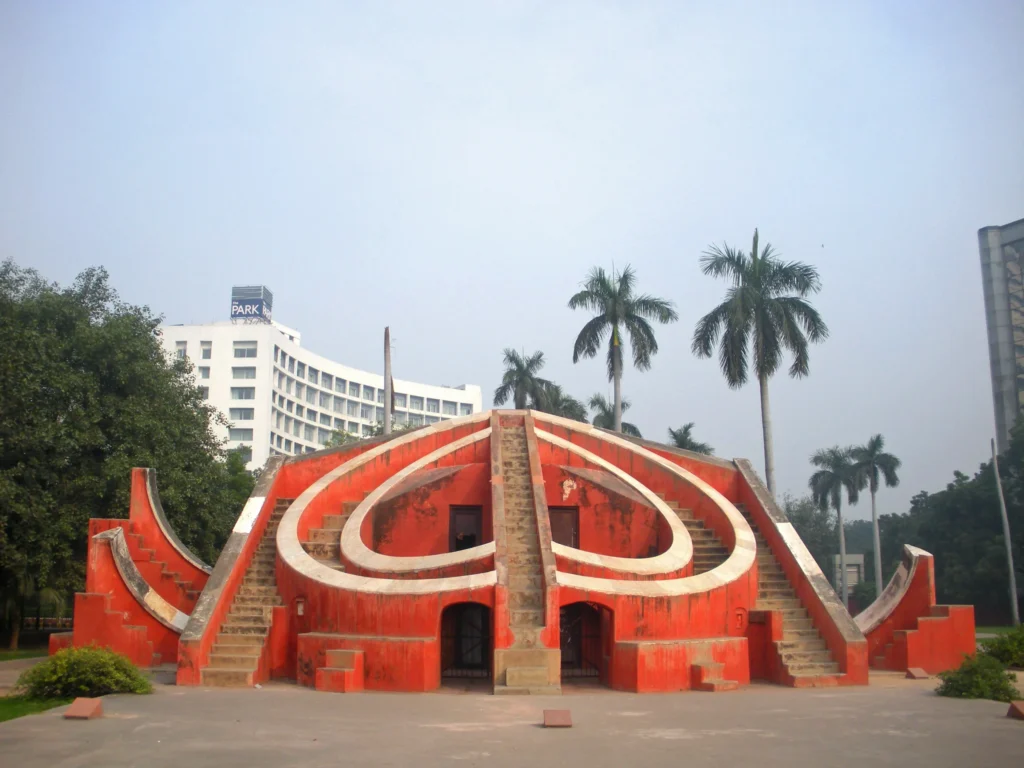
Table of Contents
Jantar Mantar: Your Impressive Guide Of 2024
Overview:
Jantar Mantar, a UNESCO World Heritage Site, stands as a testament to India’s rich scientific heritage. Built in the early 18th century by Maharaja Jai Singh II of Jaipur, it is a collection of architectural astronomical instruments used for observing celestial objects with remarkable precision. Each instrument serves a specific astronomical purpose, highlighting India’s advanced knowledge of astronomy during that period.
Jantar Mantar: Your Impressive Guide Of 2024
History:
- Constructed between 1724 and 1734, Jantar Mantar was one of the five observatories built by Maharaja Jai Singh II.
- Maharaja Jai Singh II, a keen astronomer himself, designed the observatory to improve the accuracy of astronomical measurements and predictions.
- The term “Jantar Mantar” is derived from Sanskrit, where “Yantra” means instrument, and “Mantra” means formula. Therefore, it translates to “instrument for calculation.”
- Jai Singh II aimed to create instruments that would provide precise measurements of time, azimuth, altitude, and positions of celestial bodies.
Jantar Mantar: Your Impressive Guide Of 2024
Architecture:
- Jantar Mantar features a distinctive blend of Mughal and Hindu architectural styles.
- The site comprises 13 main instruments, each serving a specific astronomical function.
- Notable instruments include the Samrat Yantra, the largest sundial in the world, and the Jai Prakash Yantra, used for measuring altitudes and azimuths.
- The structures are made primarily of masonry, marble, and brass, with precise geometric shapes and alignments.
- The observatory’s design reflects Jai Singh II’s profound understanding of astronomy and mathematics.
Jantar Mantar: Your Impressive Guide Of 2024
Things To Do:
- Explore the Instruments: Wander through the site and marvel at the intricately designed instruments, each offering insight into ancient astronomical practices.
- Guided Tours: Join a guided tour to gain a deeper understanding of the significance of each instrument and its role in celestial observation.
- Photography: Capture the stunning architecture and celestial instruments against the backdrop of the sky. Photography enthusiasts will find plenty of opportunities for striking shots.
- Attend Astronomy Sessions: Some days, astronomy enthusiasts organize sessions to discuss the historical and scientific significance of Jantar Mantar and its instruments.
Jantar Mantar: Your Impressive Guide Of 2024
Best Time To Visit:
- The best time to visit Jantar Mantar is during the winter months (October to March) when the weather is pleasant and conducive to exploring outdoor sites.
- Avoid visiting during peak summer (April to June) as the scorching heat can make outdoor exploration uncomfortable.
Jantar Mantar: Your Impressive Guide Of 2024
Location:
- Jantar Mantar is located in the heart of Delhi, near Connaught Place, making it easily accessible to tourists and locals alike.
- Address: Sansad Marg, Connaught Place, New Delhi, Delhi 110001, India.
Nearest Metro Station:
- The nearest metro station to Jantar Mantar is Patel Chowk Metro Station, situated on the Yellow Line of the Delhi Metro.
Opening Days and Timings:
- Jantar Mantar is open to visitors all days of the week, including weekends.
- Timings: 9:00 AM to 5:00 PM
Photography Charges:
- Photography is allowed within the premises of Jantar Mantar.
- There are no additional charges for photography. Visitors are free to capture memories of their visit.
- Charge rupees 25 for professional shooting.
Entry Timing and Tickets:
- Visitors can purchase entry tickets at the entrance gate.
- Ticket prices vary for Indian and foreign tourists, with discounted rates for students and senior citizens.
- Rupees 25 for Indians.
- Rupees 300 for Foreigners.
- Children below the age of 15 are usually granted free entry.
- It’s advisable to check the official website or inquire locally for the most up-to-date ticket prices and entry timings.
Book Your Tickets
Jantar Mantar stands not only as a symbol of India’s scientific prowess but also as a reminder of the country’s rich cultural and intellectual heritage. Visiting this architectural marvel offers a glimpse into India’s ancient astronomical achievements and the innovative spirit of its people. Whether you’re a history buff, an astronomy enthusiast, or simply a curious traveler, a visit to Jantar Mantar promises an enriching and unforgettable experience.
